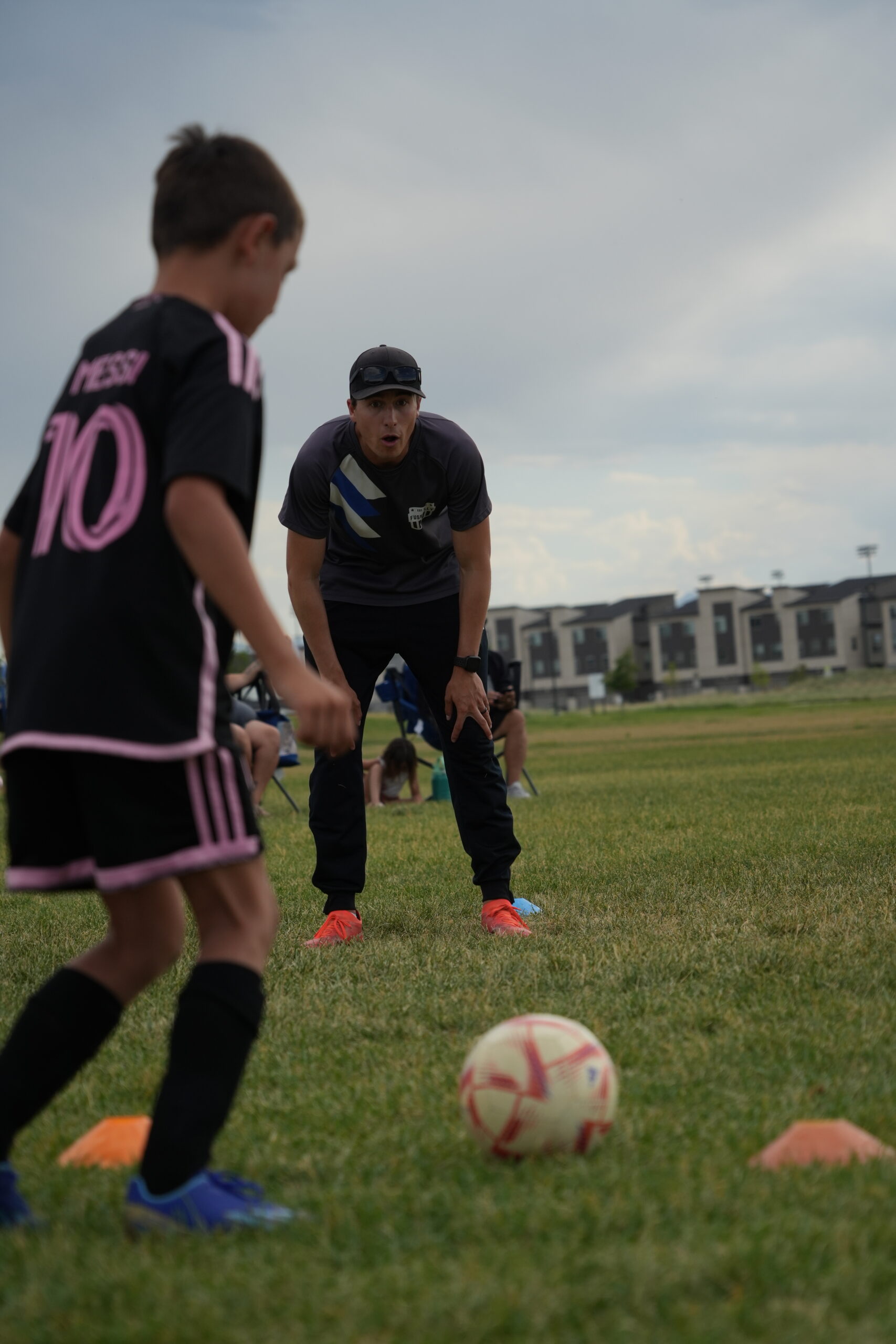Why is weak foot soccer training important?

Have you ever seen a professional swimmer compete in the regular Olympics while only using one arm?
If you use only one leg in games, it’s literally like trying to win a swimming race using only one arm.
Very often, I see young players go out of their way to avoid using their weak foot at all costs. It’s our obligation as soccer coaches and clubs to prioritize weak foot soccer training and improve both strong and weak feet equally—ideally creating players who are skilled with both feet, just like swimmers who use both arms. Every swim coach corrects kids immediately if they try to swim with only one arm, and we need to do the same in soccer.
The same applies to soccer
As players get older, training shifts from technical skills like passing and dribbling to tactics, systems, and decision-making. A recently retired pro might have spent 20 years mastering strategy — but not a single recent hour teaching a child how to do a stepover or pass with the inside of the foot. Those were skills they learned long ago and no longer think about.
That coach might thrive at the college level, where players already have solid technical foundations. But coaching a U8 rec team? That’s a whole different game.
Young kids often lack basic soccer skills, have short attention spans, and need constant engagement. They also require a totally different approach to communication and curriculum. The issue isn’t that high-level coaches don’t know what to teach — it’s that they don’t know when or how to break it down so kids can truly learn it.
So why do kids avoid using their weak foot in soccer?
“I’m terrible with my left foot” is the most common excuse I hear from players who avoid using their weak foot at all costs. And it’s understandable: kids who already have a much stronger and weaker foot know they will pass stronger and score more goals using their strong foot, even in situations where it’s not the correct foot to use.
The problem:
This is like a toddler insisting that walking is slower because they can currently crawl faster than they can walk.
While it might feel more effective right now to play only with the strong foot, this limits development and improvement potential.
When an opponent is on your right side, you need to use the left foot to dribble or pass because the right side of your body is shielding the ball from the opponent. If you use the foot closer to the opponent, it’s much easier for the defender to steal the ball.
Even when there’s no defender nearby, players often use their strong foot even when the ball is on the weak side of their body. This either results in a weaker shot or requires an extra touch or two to reposition the ball onto the strong side. Those extra touches take valuable time and create opportunities for defenders to steal the ball.
My child has a very strong foot and a very weak foot! Why?
Most kids develop a strong and a weak foot. At Fussbally, we build in equal time for both, requiring weak foot use in 50% of technical drills. Still, outside structured training, kids naturally default to their strong foot. When they join us from other programs, it’s often clear—they’ve become one-armed swimmers, rarely using their weak foot.
What can we do about it? A few things!
Make sure your child understands the importance and buys into the mission of improving both feet. It’s essential that they see the value in this—not just doing it to avoid getting in trouble.
Encourage using the weak foot more. Kids develop a strong foot because they use it more than the other one. And they use it more because they’re better at it. In scrimmages, practicing shots on an empty goal, or just playing around with the ball at home, encourage using the weak foot. Make points with the weak foot count double, triple, or more, and show your excitement as your child improves. Your encouragement and enthusiasm are the best motivators.
Provide training opportunities with professionals who understand the importance of both feet. Coaches should consistently emphasize the importance of using both feet and make the effort to correct a child when they use their strong foot in situations where the weak foot is appropriate for shooting, passing, or dribbling.
To conclude:
Just like one-armed swimmers, soccer players who avoid their weak foot will struggle to compete with players who can use both feet well. It’s up to us to guide and support our young athletes in building balanced skills and improving their soccer abilities as much as possible.